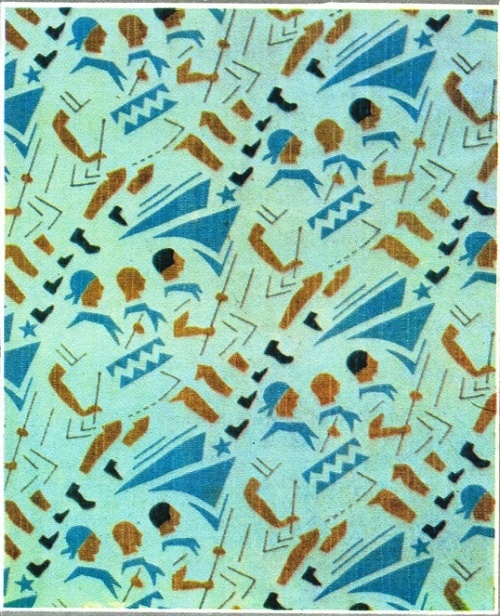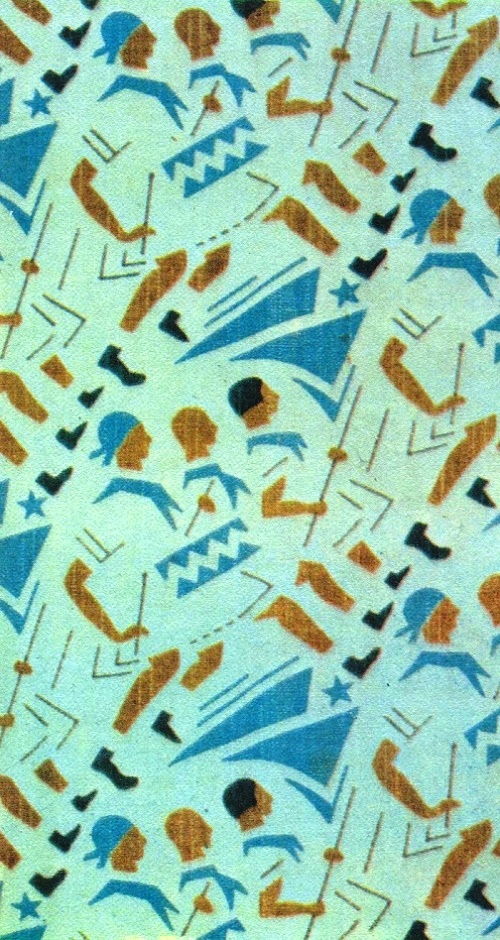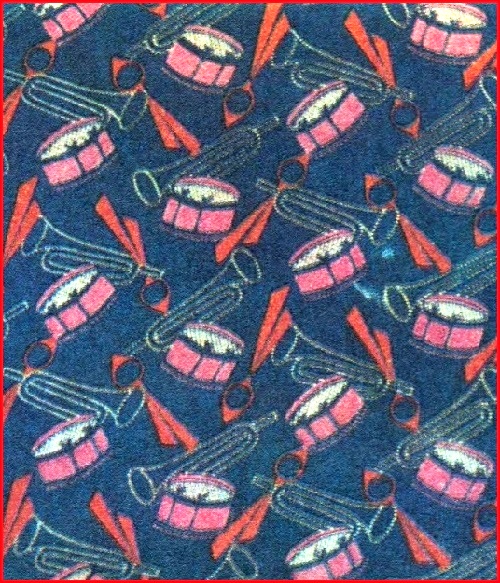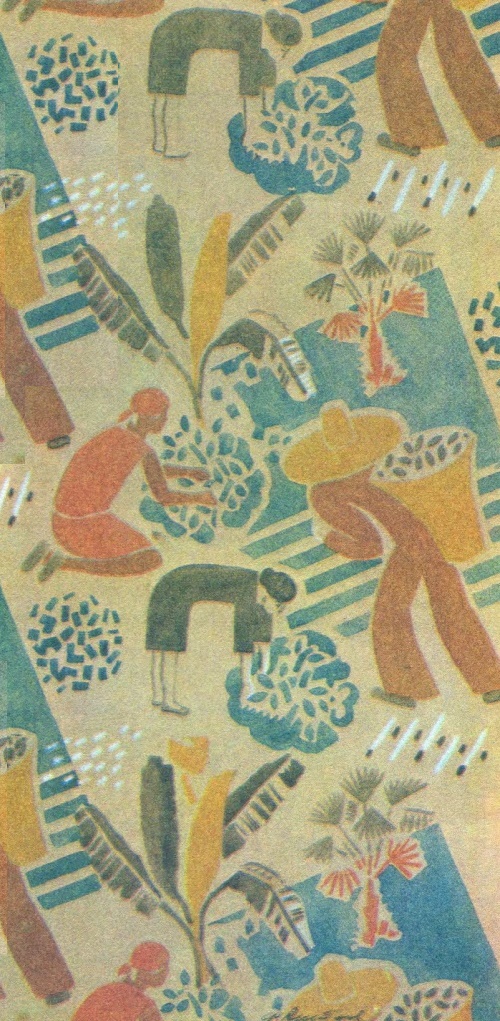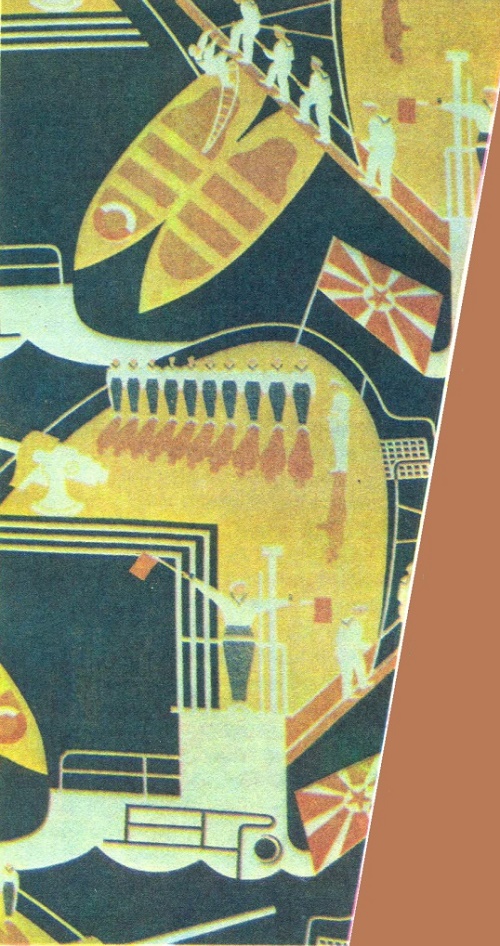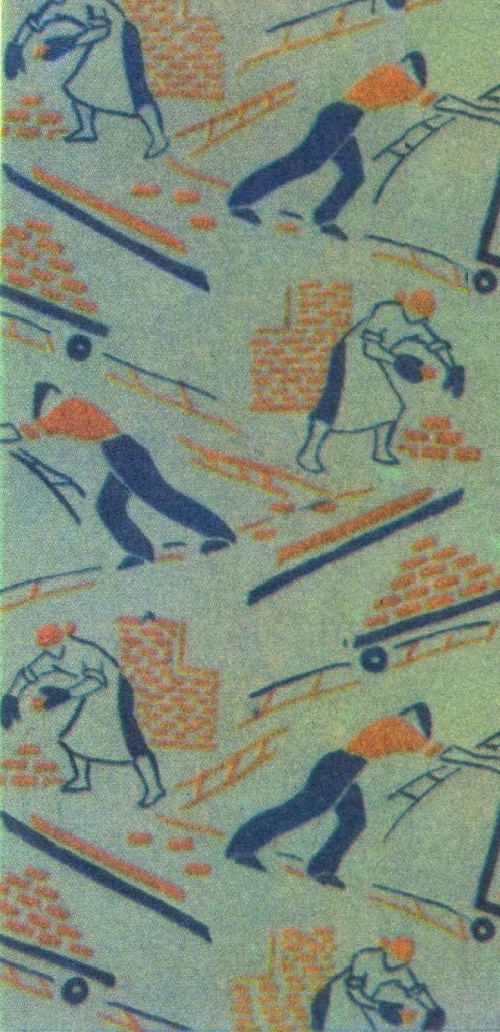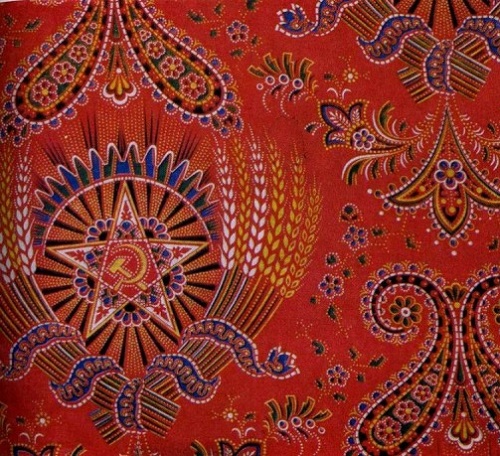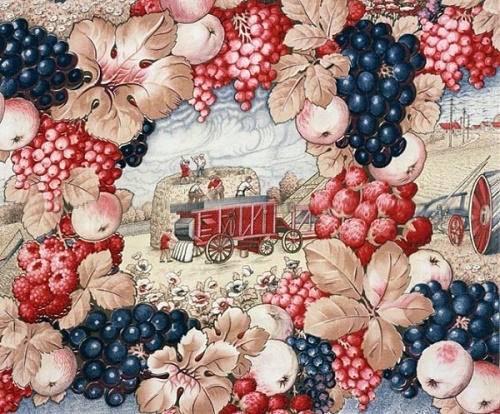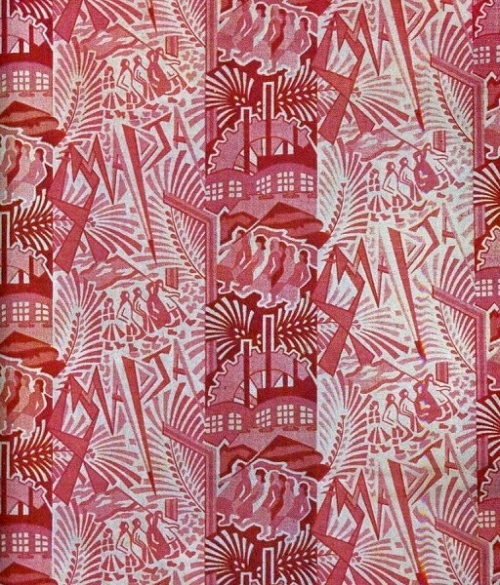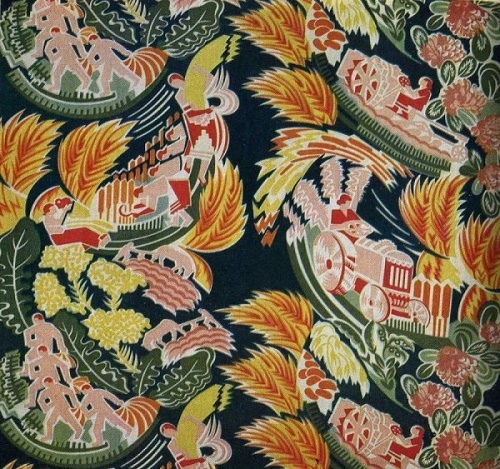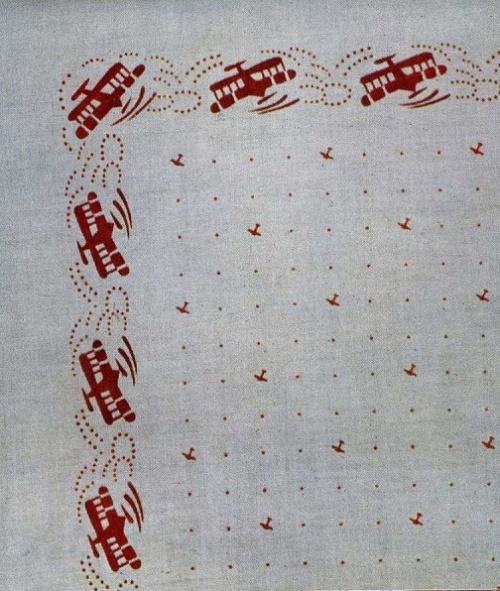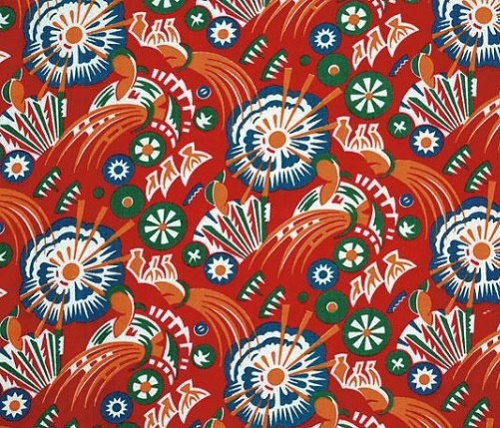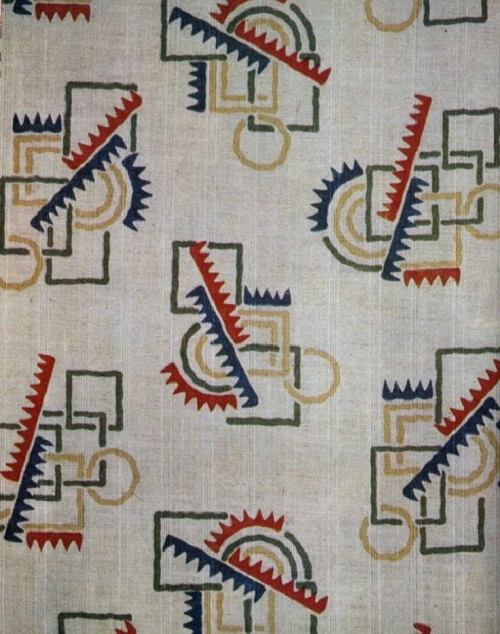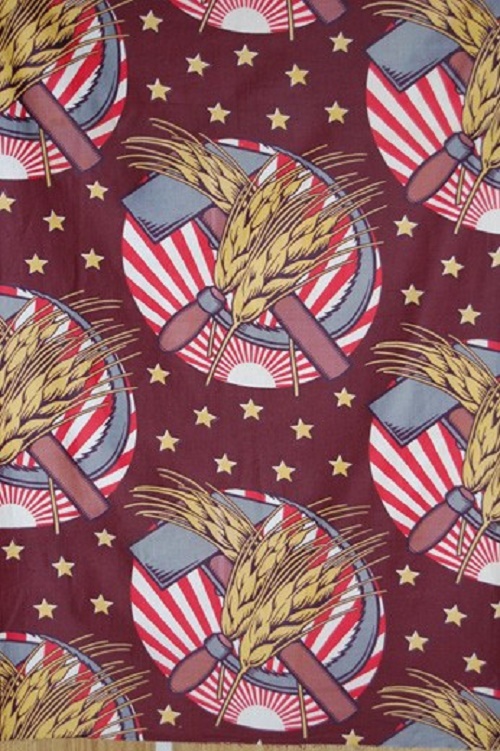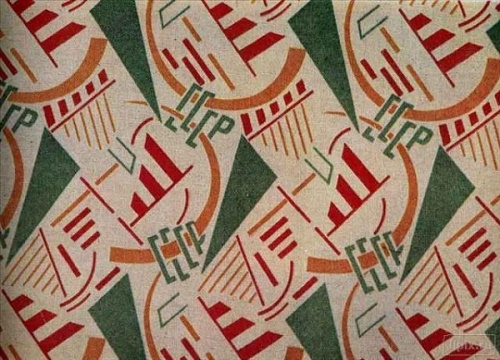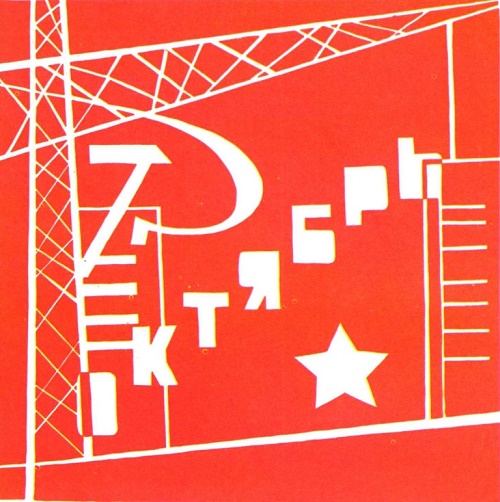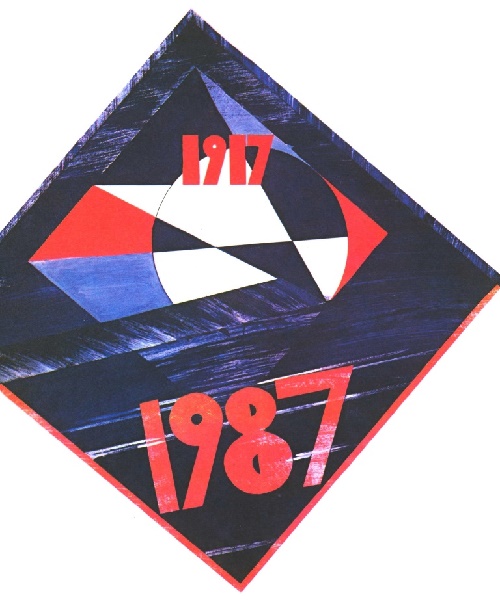Soviet propaganda textile art
Soviet propaganda textile art – Art born of revolution. Great October Socialist Revolution has stimulated the development of all types of art and had a strong impact on the textile decoration. Total inspiration of artists with future perspective expressed in an effort to convey ideas and time lines to each worker. Hundreds of thousands of meters of fabrics were decorated with images of massive five-pointed stars, airplanes, locomotives, power masts, electric bulbs. Subjects not met before in the textile illustration and keen compositional solution dramatically isolated new pattern among traditional decorative products. It was noticeable, attracted attention, gave food for thought and even disputes. It was, as they say, socially active. Drawings of this trend came to be called propaganda textiles, or “agit-textile”. Today it has taken rightful place in the history of Soviet art.
As a matter of fact, Soviet propaganda textiles commonly participated in art exhibitions. Fabrics of late 1920s were demonstrated at the exhibition “Moscow-Paris. 1900-1930”, and received enthusiastic praise from the British public at the exhibition of Soviet art in Oxford and London in 1985. This is only the beginning, as the art textiles – one of the most extensive types of arts and crafts, and its legacy is continuously updated.
Actually, art born of revolution, created the talent and hands of young artists. The vast majority of these were students or just graduated from the first Soviet Higher artistic and technical college of Art. The students – members of the textile section of the Association of Youth Association of Artists of Revolutionary Russia (Vkhutemas) sincerely believed in the transformative role of art and the new textile pattern would not have arisen without their passionate support of socialist construction. The transformation of fabrics ornament has become for them a program task.
Until 1917, draftsmen of ornaments were a closed group of artists not included in art associations and isolated from the overall development of the arts. The employers treated them the same way as, for example, the clerkы of the manufactures, not recognizing them artists. Therefore, the active participation of the first Soviet creative factory of young people in the political tasks set by the Party, was also a self-affirmation of the textile as creative individuals.
Indeed, since the mid-1920s fabrics participate in art exhibitions on a par with painting and its subject is stated in the treaties of creative associations. Equality of Arts, planted at the birth of the Soviet power, and rooted in the training of artists came to fruition. A careful analysis of the available museum collections of textile samples shows that, despite the difficult years for our country, and young performers, drawing level was high.
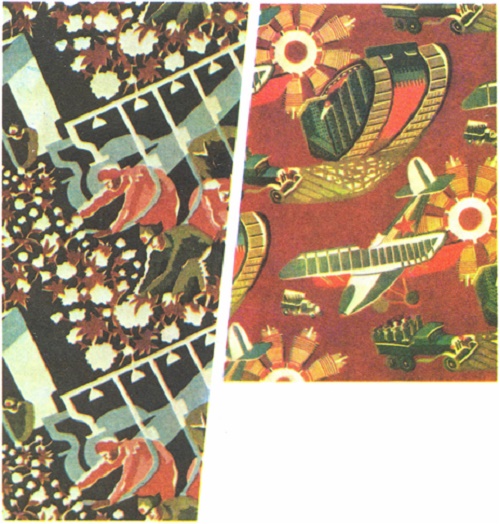
M. Nazarevskaya. Collection of cotton. Textile. Start of 1930s (left). L. Raytser. The mechanization of the Red Army. Textile. 1933
And confidence of recent graduates of the university based on the experience of brilliant teaching staff. Deep and Comprehensive and specialized training enables young artists master image of any shape, take the motives of ornaments directly from the surrounding reality, and not a historical or foreign samples. The motives were based on verified by centuries composite schemes and the quality was not inferior to the pre-revolutionary performance.
However, if the main principle of the old ornamentation was considered “delivering a sense of calm and pleasure”, the feature of the new paintings became dynamic, expressive movement. The word “development”, “movement”, “growth” was then on everyone’s lips. It impacted the need to bring the country out of chaos, to build, to set records, and the fabric had to match the rhythms of fast-paced life. Time to hurry up. Repeated plot motif and its clear readability embodied a sense of community. On textiles – moving cars, smoked factories, rolling wheels, running and swimming athletes. The people and equipment involved in the construction of socialism, lived, sought to target. The direct connection with modernity – the importance of the democratic conquest of the initial stage of the Soviet textile school.
Also, agitation ornament devoid of vegetative character images. Flowers on fabrics contacted with a lush floral decoration in the interiors of homes of the rich and excluded from the scope of attention as the middle class attributes. The word “flowers” was used in a negative sense. Now we are already hard to understand that, but then it was a matter of course. Geometry in all more or less complex ornamental motifs had a stylistic character.
As a matter of fact, way of life demanded new types of clothing, which were just beginning to develop. Before the Revolution, nobody was seriously engaged in the design of clothes for ordinary workers. Agitation textile has highlighted the need to address these fabrics, especially the creation of the interior public workers’ club. Construction of the first Soviet club has allowed to design the sufficiently targeted fabric, and a number of diploma works of graduates of the Faculty of Art of the Moscow Textile Institute, performed at the beginning of the 30s, were dedicated to this task. Such as, for example, decorative fabric “Loggers” by student L. Zhavoronkova.
Soviet suit for various purposes served in the life of Russian peasant slowly. Ornamentation was often not taken into account when tailoring. However, the new, finely-patterned drawing, executed on the dress fabrics, could exist without the damage to the clothing of workers of town and country. Minor figures, including the image of the hammer and sickle, sickle and ears of wheat, hammer and anvil, even industrial motifs on white or colored backgrounds, looked in products primarily as a rhythmic filling of the plane, and there was no difficulty in cutting deficit those days textiles.
Much time has passed, life has changed, but Soviet propaganda textile still have not lost relevance. Moreover, the interest in this phenomenon in art, its need is increasing. Now every major international socio-political or sporting event passes without specifically devoted to this event textiles. Shirts, T-shirts, jackets with wit, the image of five Olympic rings, bicycles, cars and inscriptions are popular and eagerly bought.
So, it was in the days of the Moscow Olympics and XII Youth and Students Festival. Young people all over the world to express their views on social structure, culture, wore clothes with different symbols in everyday life. It is the emblem of universities, institutes, clubs, the names of student construction teams and other symbols and images. Figure of dove with the word “peace” in different languages for many years use supporters of peace around the world. The very existence of such images on clothing is not surprising and is taken for granted.
Of course, in contrast to the 1920-ies of the modern development of the theory and practice of artistic design and increased power of clothing companies allow to address very accurate designs to any particular dress. Opens the possibility to design even more acute and complex images, unrealistic in the pre-war period due to lack of advanced modeling of mass clothing. The first Soviet textile patterns show the way this works. The images on the fabric, as we now see, is not only a decoration, but also an expression of the ideals of society. Young people are the most susceptible to changes in life, clothing, and their role in creating new patterns can not be overestimated. Experience shows that it is they who, with the support of the Young Communist League became the pioneers in the new ornaments for clothing, especially in propaganda figures of high citizenship nature.
Soviet propaganda textile art
Source: Young Artist magazines, 11/1986, 1987
